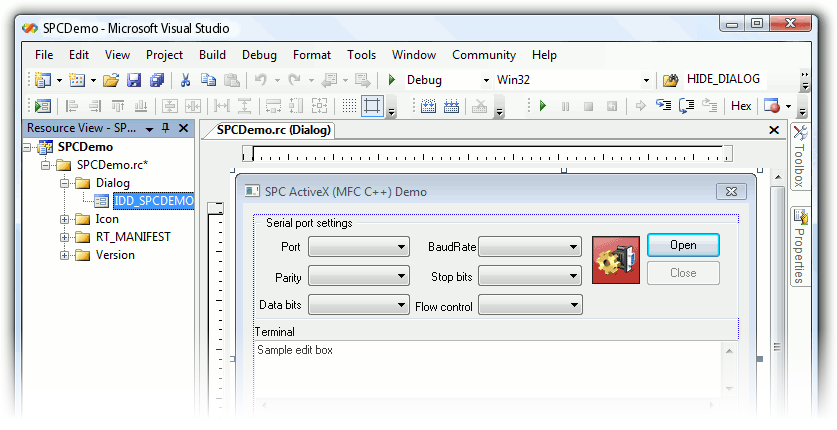Vb6 Serial Port Sniffer Source Code
Source codes are provided. Commercial software which hooks the serial comm port would usually use a filter device driver that attaches itself to a.
Implementing and Debugging RS232 serial connections A short tutorial on serial interface communications A NULL modern adapter There are thousands of devices available with an RS232 serial interface including laboratory instrumentation, quality and process control devices, measuring instruments, meters, gauges, scales, industrial controllers, sensors, PLCs, etc. Although RS232 connections are meant to be simple, they can be extremely frustrating to debug. There are several aspects of each type of connection where things can go wrong including hardware and cabling problems, communications settings mismatches and communications protocol problems. Fortunately, there are a number of inexpensive (and sometimes free) software tools that you can use to quickly figure out what is going wrong.

Once you have everything connected and communicating properly, you are then faced with the problem of developing the application that reads in data from the device and does something useful with it. Free id card template download. Again, there are plenty of tools widely available to make this part of the job relatively quick and painless. Selecting the correct COM port The first step in debugging RS232 connections is to make sure that you are connected to the correct COM port on your PC and that you have the right cable for connecting the device to your PC. If you are unsure of which serial port you are connected to, you can look in the Windows Device Manager under the “Ports (COM & LPT)” section to see a list of all the ports that are installed in your system - including Virtual COM ports created by add-on serial adapters.
You can then try setting up whatever communications software you are using to connect to each available COM port to see if you can communicate with the device that is connected to the port. Using the right cable There are two primary types of RS232 cable — “modem cables” and “Null modem cables”.
The most basic RS232 cable has three wires — a transmit line, a receive line and a signal ground. It is also possible for a serial cable to have other “handshaking” lines in the cable as well. The extra lines are used to control the flow of data through the connection.
Whether you need these extra lines or not will depend on the device that you are trying to communicate with. If the device uses any type of “hardware handshaking” (A.K.A. RTS/CTS or DTR/DSR flow control) then these lines must be present in the cable otherwise you may not be able to communicate with the device.
Obrazec zaklyucheniya kadastrovogo inzhenera dlya suda e. Write something about yourself. No need to be fancy, just an overview. No Archives Categories.
A Modem Cable has the wires in the cable going straight through whereas a Null modem cable has the transmit and receive lines (as well as the handshaking lines) crossed in the cable. If you use the wrong cable, you will never be able to communicate. A device called a “Null Modem Adapter” is a small connector that slips in line with the cable connection to cross the transmit and receive lines (and the handshaking lines) in the cable. You can pick one up at any computer or office supply store for around $5.00. If you are not sure about what type of cable your particular hardware uses (or what type of cable you have), having a Null modem adapter handy is always a good idea. Try communicating with the device without the Null modem adapter in the line and, if you are unsuccessful, try again with the Null modem adapter in the line.